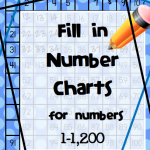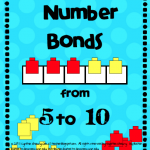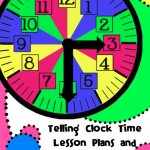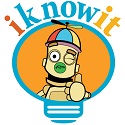Amazing Math Enrichment!
Are you looking for something to fill time towards the end of the school year? Do this amazing group of activities revolving around the Fibonacci sequence. For a classroom teacher this would probably take about a week. I did this with higher level learners in fifth grade. They were intrigued.
Lesson 1: First we watched this video:
Then we added Fibonacci numbers up to sequence 30. This was good for students who needed to add some larger digit numbers since they get large rather fast. We talked about what Fibonacci numbers were and where they were located on our bodies, such as in the spiral of our ears, hair, and fingerprints. I brought a few pinecones to examine.
Lesson 2: We watched this video.
Then we went outside and found pine cones, I brought some raw broccoli, and I got some daisies at the local grocery store. We examined these items for Fibonacci spirals and counted the number of petals and looked for spirals.
Lesson 3: We drew a Fibonacci Spiral and talked again about where we could find it on our own body. This video shows how to draw a Fibonacci Spiral more slowly.
Lesson 4: We found the golden ratio. I had students pull out their Fibonacci numbers that they had figured out in the first lesson. Students need to divide the larger Fibonacci number by the smaller preceding one all the way down the sequences. I allowed them to use calculators to do this. I had them record 10 decimal places after the decimal. Eventually students end up seeing the pattern.
Lesson 5: (This took 2 classes) We measured our body parts with a measuring tape and ruler. If you want these measurements to be more accurate, I figured out the second time that I wanted students to use the centimeter side of the measuring tape so that the Golden Ratio would turn out more accurately. This way students don’t have to keep up with fractions of an inch. I did use a product on TPT for students to do this. There are several which have places for students to fill the measurements of their body. They actually did get 1.6 on some of their measurements!!!
Lesson 6: We made an angletron with 137.5 degrees which also is related to the Fibonacci sequences.
Then we went outside with our angletron and tried to find Golden Angles. I found one and asked the children if it was truly a Golden angle. They confirmed the veins in the leaf of an oak tree were a Golden Angle!! WOW!!!!!WOW!!!
Are You Scrambling for End of Year Resources?
I usually am. Well, don’t underestimate Super Teacher Worksheets wealth of resources. Did you know they have cute printable for saying goodby to your students OR super fun puzzles you can do to keep your children busy on those last few days when you are working on cleaning out your room. What about the “brain rot” that happens over the summer. Don’t you think your students’ parents might enjoy a summer fun packet? Look no further! Super Teacher Worksheets has all of this and more!

Try this Great Field Trip!
A few years ago I went on THE best field trip EVER! It is a place your wouldn’t think of going. We went to the water plant. We got to see how water was gathered, filtered, and sanitized. I know not everyone has the same water plant I have, but this is a great trip worth looking into for your area. We got to do a virtual trip this year, which was also great! I’m going to list several reasons why.
- Engineering Process. Even though we didn’t watch any engineers, we got to learn about the filtration process step by step. There is a lot of thought that goes into filtering water and treating the water with different chemicals. It moves throughout several pools to filter before chemicals are added. Very talented engineers had to design this process for it to be safe for us
- Chemistry. Students were able to learn about the chemicals chlorine and fluoride. They learned why these chemicals are important for the water that comes from our faucet.
- Measurement. Our students were able to see how large a pipe was compared to their size. They are about six feet in diameter.
- Appreciation. Students listened to the workers at the plant tell about how they watch computer screens on a 24 hour basis to see if there are any leaks that would indicate there is a problem. These workers have to work even when weather is bad to protect the water supply. This will make you appreciate what comes out of the faucet even more.
- Career opportunities. There are many, many people that work at a water plant providing many career opportunities for children to aspire towards. They can learn first hand from people who hold jobs in a career field they may be interested in.
Students said that this was one of their favorite activities this year–learning about the water plant.
Consider other overlooked places for field trips, also. Have you considered your local electric plant or recycling center? Sometimes learning about the seemingly ordinary and mundane can draw student curiosity.
Fun Mars Rover Helicopter Lesson!

We built these little helicopters a few weeks ago. Students were highly engaged. They are little helicopters that mimic the helicopters which will be deployed from the Mars Rover to obtain pictures of the more rocky terrain.
There is so much rich STEM information provided on the NASA website along with this very helpful video to share with students about the helicopters. Check out this free ready made lesson!


Team Building with Tools

Help your children understand one another while teaching analogies. Which are you– a screwdriver, a hammer, a tape measure, a paintbrush, a saw, sandpaper, or another tool? Why are you like this tool? What are the strengths and weaknesses of this tool? Discussing these things can help students talk to one another without hurting each other’s feelings because then they are talking about tool attributes instead of attacking a person. Below I have placed a worksheet to help you facilitate this discussion in your classroom.

Happy St. Patrick’s Day
Teach your students the true story of St. Patrick. There’s more to it than just wearing green!

Are you looking for some great St. Patrick’s Day Activities? Look at the MANY activities that Superteacherworksheets.com offers!
Use Snow to Your Advantage: Snow Day Learning!
There’s no day like a snow day…in the South that is! We have had a great time for about a week and a half with a large amount of snow where I live, yet we were teaching virtually. I knew this was a losing battle. I mean if I was a child, I definitely wouldn’t be doing schoolwork when record snowfall is happening outside. I gave the kids these options, and do you know what?! I actually had some children participate!!
Here is what I assigned them:
Snow Experiments and Creativity
Do this OR pick two of the following:
Build a snow creation that no one else will think of (especially not a snowman or woman). Add extra details to make it more interesting. Give it an interesting name. You must use at least 2 snow tools to build your sculpture. I showed them 2 snow sculpture videos in which they used tools.
What tools did you use?
How did you use the tools? What did you build? Send me a picture.

1.Measure the snow in it’s deepest part with a ruler. Use inches. Where did you measure it? How deep was it?

2. Put a some snow in a jar or measuring cup. Mark a line to show how deep it was in the jar. Bring it inside and let it melt. Mark the new line. How did it change? Why do you think this happened?

3. Throw some crackers or breadcrumbs outside. Watch the birds. Feed them. How are they eating since the snow is so deep? What kind of birds do you see? What do you notice?
5. Do you have a thermometer? Take the temperature from your hands outside. Now put on mittens. Put the thermometer inside the mittens. How did the mittens affect the temperature of your hands?
6. Get some containers with a small spout like water bottles and fill them with very cold water. Add food coloring. Make a beautiful picture in the snow by pouring your colored water out on the snow. Send me a picture.
————————————————————————————–
The actual results of my activitiesI had some students measure the snow in a jar and melt the snow in the microwave. Over a zoom we figured out the fractional amount of water that was created after the snow had melted. We discovered that one-fourth of the water remained from the melted snow.
I had students who took their technology device outside to build their snow sculpture so that the other kids could be involved in what they were doing. The sculpture changed several times as it didn’t work out like the child had planned. I also had one child build a snow fort as she turned a tunnel into a structure where her father buried her.
Another student excitedly exclaimed that he had a book about birds for the bird watching activity! (I reminded children they could go inside to do this one and get warm if they got cold in the snow.) This same child seemed to delight in waking his mother up from a nap to ask for food coloring of which they had none.
Lastly, I had a measurement competition going in which children found the depth of snow at their house. Now, I couldn’t tell you if they were being honest, but at least they were pulling out a ruler and thinking about measurement.
I hope you get a chance to experience some of these activities with your students virtually, too!
Two Fun Valentine’s Day Activities
I always love doing this in February with my students. Students measure their kiss.
And, what Valentine Party is complete without Valentine Bingo? This is always a great time filler to any class party! Play with candy conversation hearts or red hots for extra fun! Snag this one at Superteacherworksheets.com
































